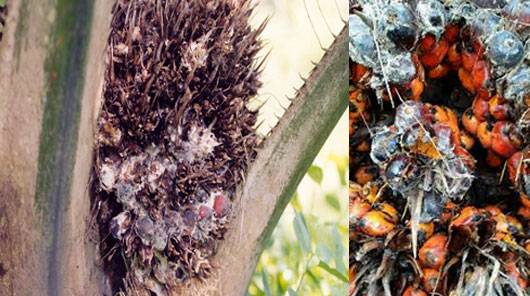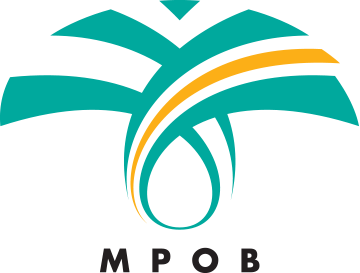Biology and Symptom
Most frequent outbreaks occur in palms 3 to 9 years old but can be severe in palms recently brought into bearing in the absence of adequate pollination. Outbreaks associated with periods of wet weather, and prolonged moist conditions seems to favor disease development. During the early stages of infection, strands of mycelium can be seen spreading over the bunch surface. Mycelium development is particularly profuse at the back of the bunch, against the base of the subtending frond where conditions are very moist. In the later stage, the mycelium grows over the fruit surface and penetrates the mesocarp.

Causal
Marasmius palmivorus is the primary pathogen in causing brunch rot. The ecological status of the fungus is saprophytic. The fungus is saprophytic on a wide range of dead and moribund plant materials, occurring also on the piles of dead fronds left behind on the ground after harvesting.
Disease Management and Control
In most instances, adequate control can usually be obtained by sanitation and maintenance of an adequate level of pollination. The disease can usually be controlled by agronomic practices. Prophylactic sprays of fungicides such as copper fungicides (i.e. copper oxide and Bordeaux mixture) or thiram can be carried out as a preventative control. are also recommended.
